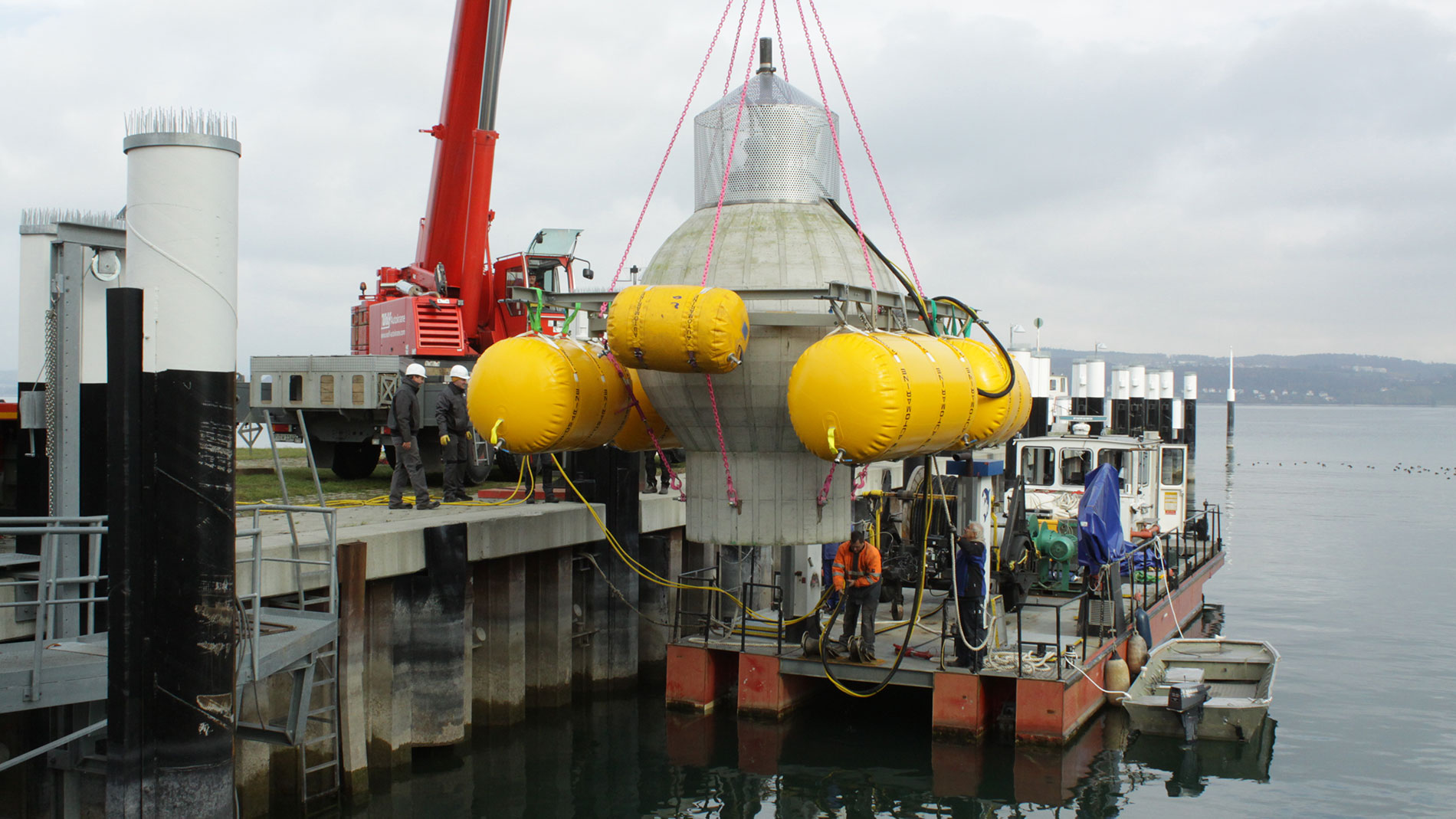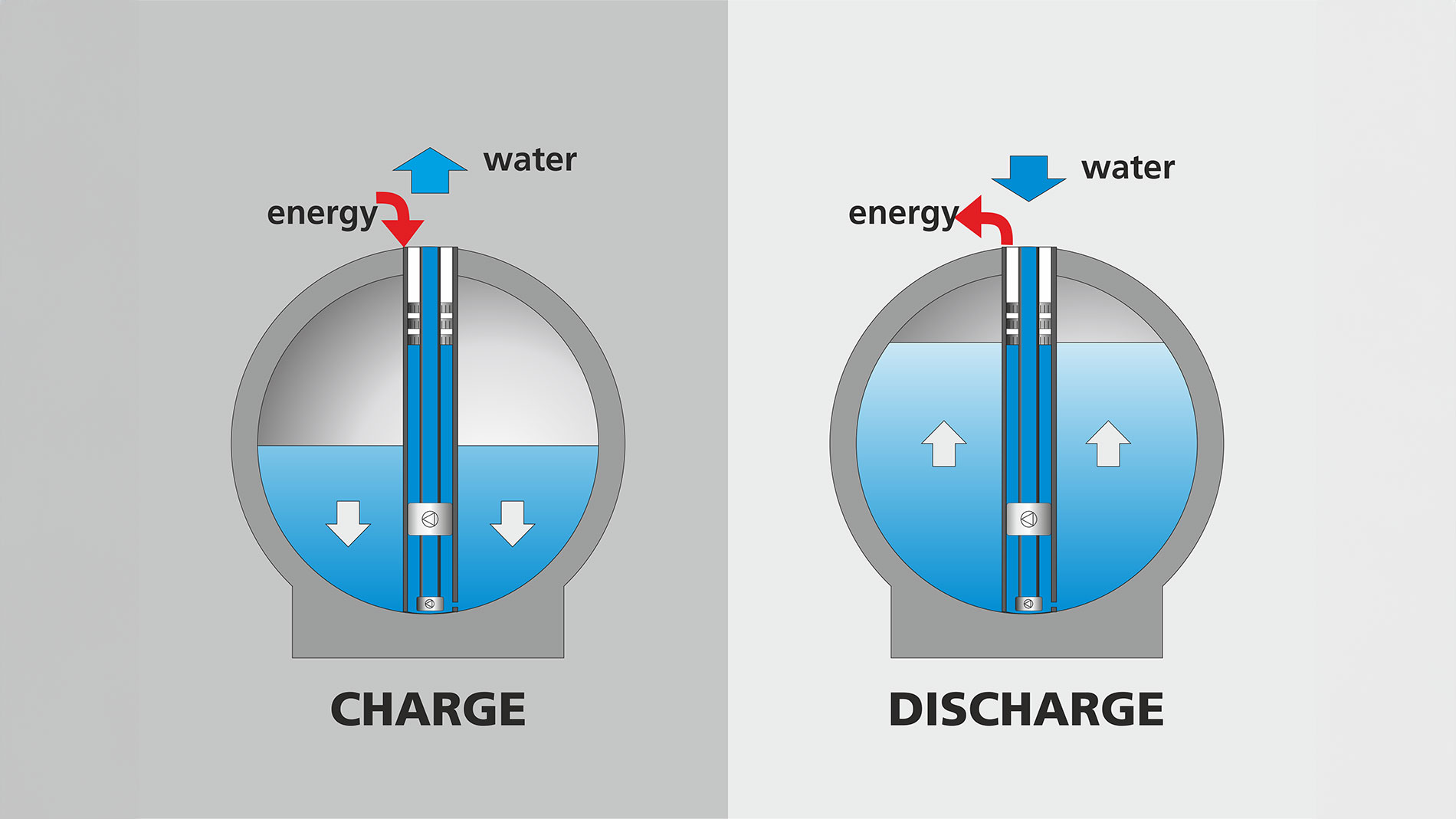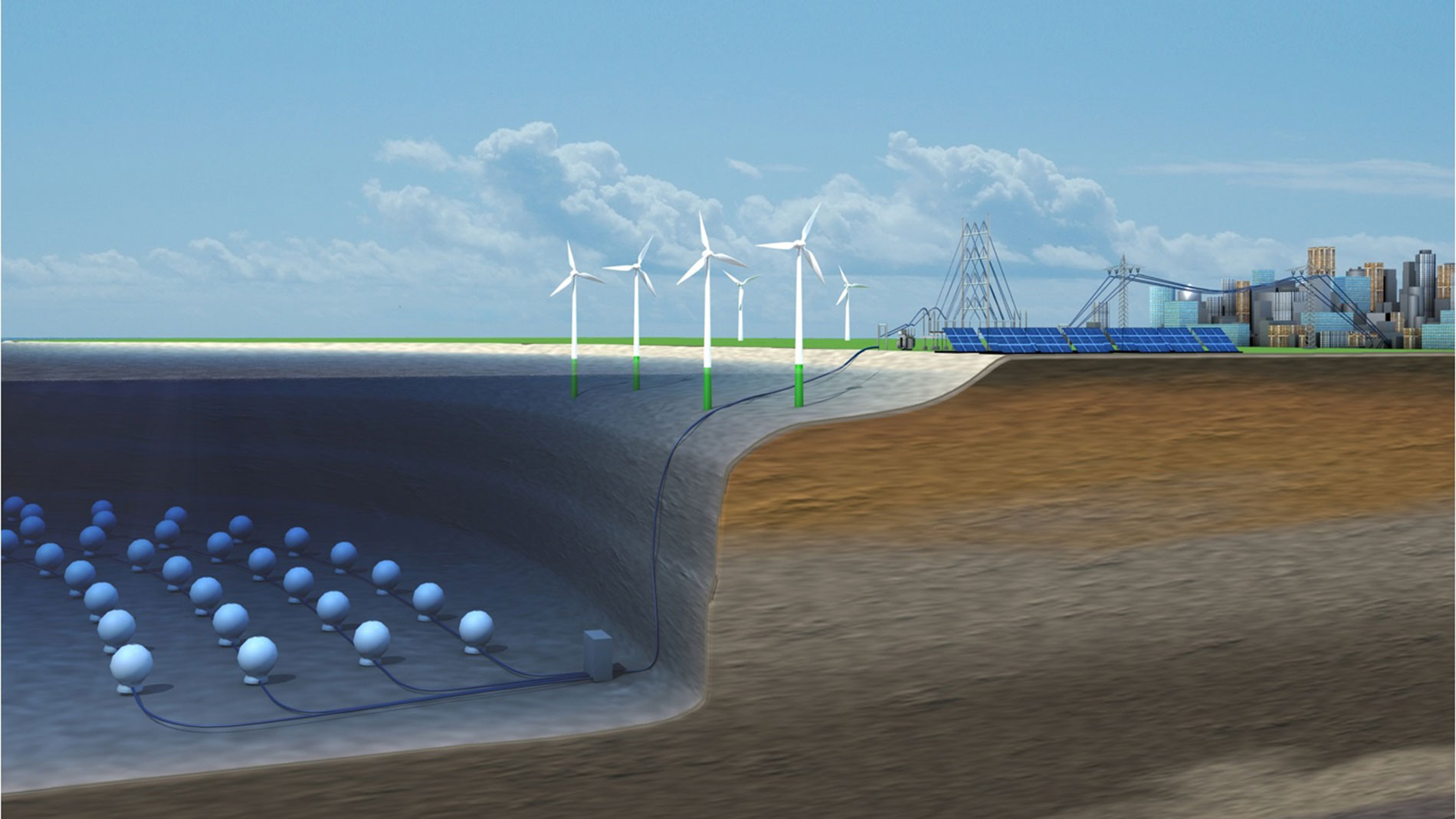18 December 2024
The expansion of renewable energies continues to drive demand for storage options. The Fraunhofer Institute for Energy Economics and Energy System Technology (IEE) has developed special underwater bentonite spheres that transfer the principle of pumped-storage power plants to the seabed. Additive manufacturing is used to produce the spheres, which weigh several tons.

Off the Californian coast, a 400-ton concrete sphere nine meters in diameter is to be anchored and tested at a depth of 500 to 600 meters in the StEnSea project. It’s a storage system that follows a very simple principle: the storage tank is charged by pumping the sphere empty. When water flows into it, electricity is generated. The prototype has an output of 0.5 megawatts and a capacity of 0.4 megawatt-hours. If everything goes according to plan, the aim is to build concrete spheres with a diameter of 30 meters.
Fraunhofer IEE is working on this project with the US start-up Sperra, which specializes in 3D concrete printing for applications in the field of renewable energies. Its second partner is Pleuger Industries, a German company now headquartered in Miami that is one of the world's leading manufacturers of underwater motor pumps.
These three entities have selected a coastal area off Long Beach (near Los Angeles) as their storage site. They plan to put it into operation by the end of 2026 at the latest. The German Federal Ministry for Economic Affairs and Climate Action is funding the project with nearly €3.4 million, and the U.S. Department of Energy is contributing around U.S.$4 million.

Successful field test in Lake Constance
Sperra will manufacture the concrete sphere in Long Beach using a 3D printing process, possibly in combination with traditional concrete construction. An underwater motor pump will be integrated into an opening in the top of the sphere inside of a pipe.
When a valve is opened, water will flow through the pipe into the sphere. The integrated pump runs in reverse and works as a turbine. The water drives the motor, generating electricity and discharging the storage. An underwater cable connects to the power grid on land or to a floating transformer station at an offshore wind farm. To store energy, the turbine pumps the water out of the sphere against the pressure of the surrounding water column. The cycle can then begin again.
In a field trial with a three-meter sphere in Lake Constance (Germany), Fraunhofer IEE researchers and their partners have already proven the viability of this concept.

Water depths of 600 to 800 meters are ideal
The capacity and performance of the storage spheres depend primarily on two factors: the volume of the spheres and the water column exerting pressure on them. Fraunhofer IEE experts have calculated that water depths of 600 to 800 meters are ideal from an economic perspective. Here, parameters such as pressure, the required sphere weight, and the necessary wall thickness are in optimal proportion to each other. Moreover, conventional underwater motor pumps can still be used at such depths, and special high-strength concrete is not necessary.
StEnSea’s spherical storage is particularly suitable for two business models: for arbitrage (i.e. buying electricity at low prices and selling when the market is high) and for providing ancillary services to stabilize power grids.
Tags
- Energy
